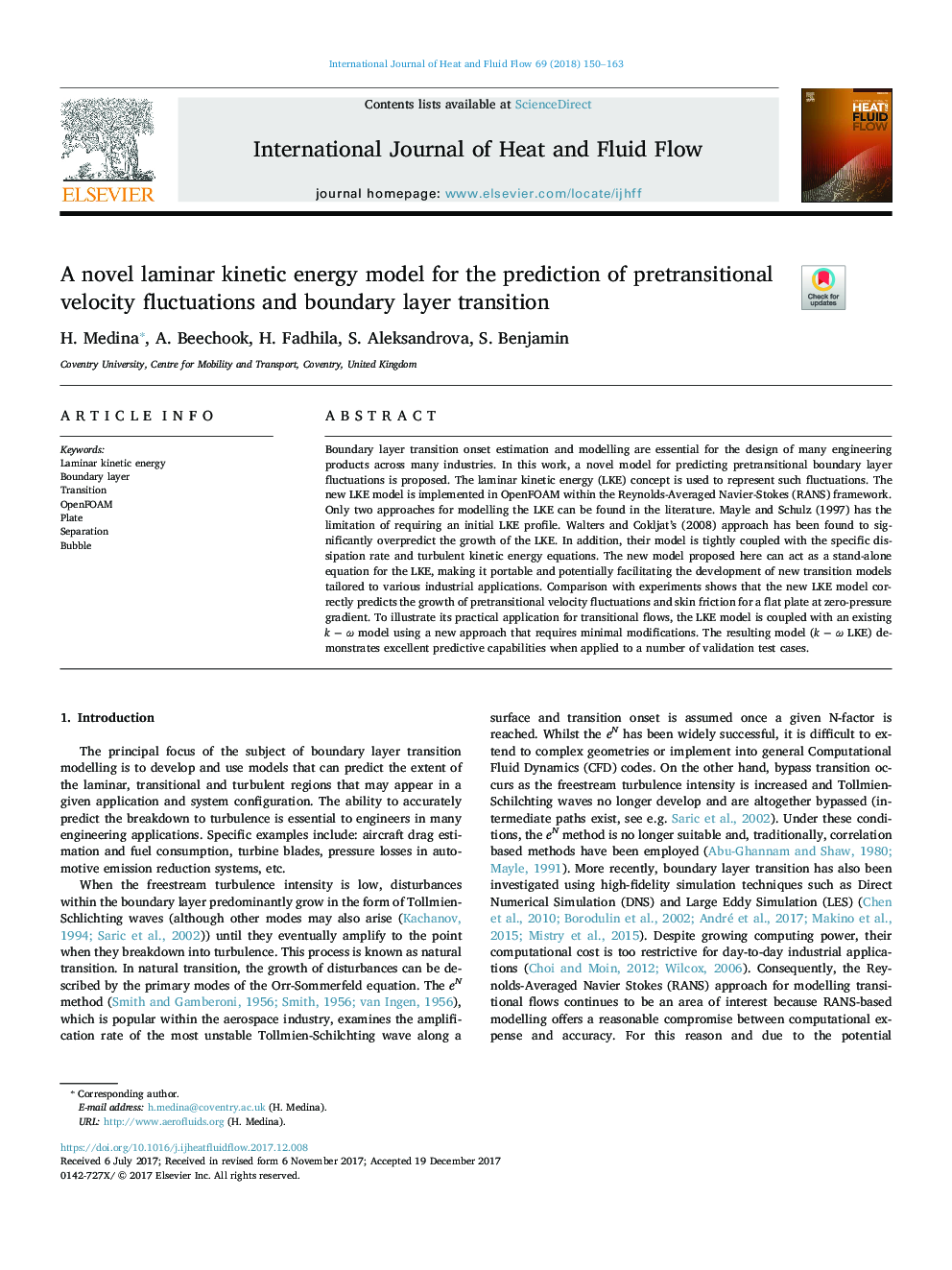| کد مقاله | کد نشریه | سال انتشار | مقاله انگلیسی | نسخه تمام متن |
|---|---|---|---|---|
| 7053533 | 1457609 | 2018 | 14 صفحه PDF | دانلود رایگان |
عنوان انگلیسی مقاله ISI
A novel laminar kinetic energy model for the prediction of pretransitional velocity fluctuations and boundary layer transition
ترجمه فارسی عنوان
یک مدل انرژی جدید جنبشی برای پیش بینی نوسانات سرعت انتقال و انتقال گذرگاه مرزی
دانلود مقاله + سفارش ترجمه
دانلود مقاله ISI انگلیسی
رایگان برای ایرانیان
کلمات کلیدی
موضوعات مرتبط
مهندسی و علوم پایه
مهندسی شیمی
جریان سیال و فرایندهای انتقال
چکیده انگلیسی
Boundary layer transition onset estimation and modelling are essential for the design of many engineering products across many industries. In this work, a novel model for predicting pretransitional boundary layer fluctuations is proposed. The laminar kinetic energy (LKE) concept is used to represent such fluctuations. The new LKE model is implemented in OpenFOAM within the Reynolds-Averaged Navier-Stokes (RANS) framework. Only two approaches for modelling the LKE can be found in the literature. Mayle and Schulz (1997) has the limitation of requiring an initial LKE profile. Walters and Cokljat's (2008) approach has been found to significantly overpredict the growth of the LKE. In addition, their model is tightly coupled with the specific dissipation rate and turbulent kinetic energy equations. The new model proposed here can act as a stand-alone equation for the LKE, making it portable and potentially facilitating the development of new transition models tailored to various industrial applications. Comparison with experiments shows that the new LKE model correctly predicts the growth of pretransitional velocity fluctuations and skin friction for a flat plate at zero-pressure gradient. To illustrate its practical application for transitional flows, the LKE model is coupled with an existing kâÏ model using a new approach that requires minimal modifications. The resulting model (kâÏ LKE) demonstrates excellent predictive capabilities when applied to a number of validation test cases.
ناشر
Database: Elsevier - ScienceDirect (ساینس دایرکت)
Journal: International Journal of Heat and Fluid Flow - Volume 69, February 2018, Pages 150-163
Journal: International Journal of Heat and Fluid Flow - Volume 69, February 2018, Pages 150-163
نویسندگان
H. Medina, A. Beechook, H. Fadhila, S. Aleksandrova, S. Benjamin,
